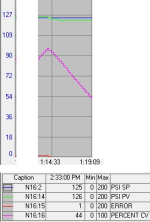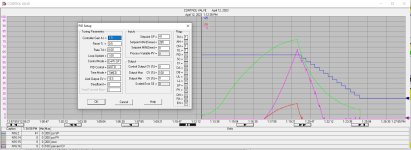1. Please tell me just one thing: do you read what is written for you?
2. Just list to yourself what you have done in the last couple of weeks that is helpful in solving your problem: examined a valve, examined any other components of your system, posted data on the forum that could help us give you a hint on solving your problem...
3. I asked about the scaled-up PV curve. Is it available?
1. Yes, I've read all of it. I have not understood all of it, Peter and Bitboy's discussion of modelling and mathematics is pretty steep learning curve, it was also not applicable to the scenario since it was regarding my incorrect description of the process. Informative, but not directly applicable.
2. Working on it today, as per bitboy's suggested measurements. I have also compared both pressure systems responses (virtually the same) and equipment, both use the same valves, controllers, transducers, PID values, etc. with only some minor differences in pipe run lengths and such. I'm not sure what other data I can get that would help anyone solve the issue of overshooting the setpoint. This is why I asked, hoping to get other opinions as to where to look for solutions.
3. The last two charts I posted used 500 msec as the update rate on the trend, if you'd like faster I can do. If that's not what you are looking for, I'm sorry I don't understand your request.








